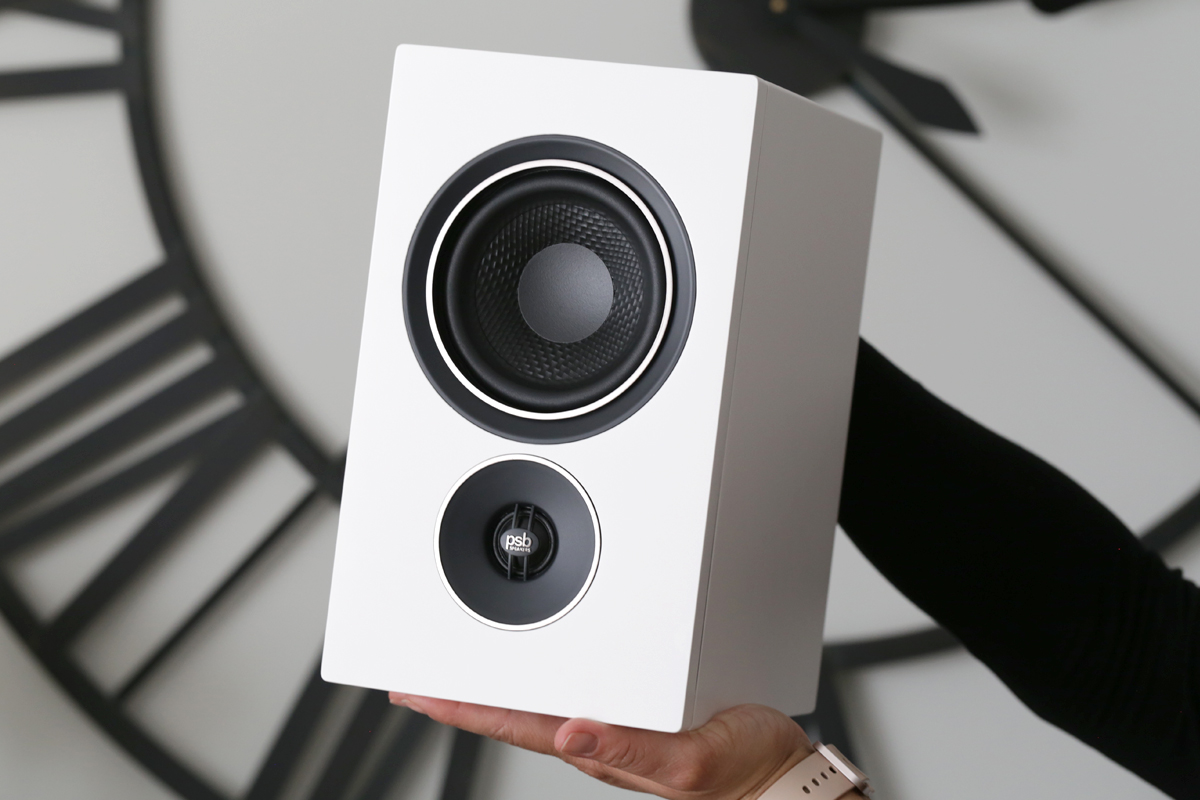 In audio, as in other pursuits, looks are often deceiving. A case in point is PSB’s new Alpha iQ active loudspeaker system. Priced at $1499 (all prices in USD except where noted), the Alpha iQ looks a lot like PSB’s Alpha AM3 powered speaker system, which costs only $549. The Alpha iQ and Alpha AM3 even have the same driver complement for each speaker: a 4″ polypropylene midrange-woofer with a rubber surround and steel basket, mounted above a 0.75″ ferrofluid-damped, aluminum-dome tweeter with neodymium magnet.
In audio, as in other pursuits, looks are often deceiving. A case in point is PSB’s new Alpha iQ active loudspeaker system. Priced at $1499 (all prices in USD except where noted), the Alpha iQ looks a lot like PSB’s Alpha AM3 powered speaker system, which costs only $549. The Alpha iQ and Alpha AM3 even have the same driver complement for each speaker: a 4″ polypropylene midrange-woofer with a rubber surround and steel basket, mounted above a 0.75″ ferrofluid-damped, aluminum-dome tweeter with neodymium magnet.
There are some visible differences, but none that would make you think the Alpha iQ should cost $950 more than the AM3. Like the Alpha AM3, the iQ is available in black or white finishes. But the iQ’s painted enclosures look classier than the AM3’s vinyl-clad cabinets; the Alpha iQ system has an understated, European elegance. Each iQ speaker enclosure is almost 40% larger than each AM3 enclosure, which is fronted by a detachable perforated metal grille; each Alpha iQ speaker has no grille.
Both the Alpha iQ and Alpha AM3 systems have optical S/PDIF (TosLink), line-level analog (3.5mm), and MM phono (RCA) inputs. Both systems employ the same phono stage, which is designed by PSB’s sister company NAD. And both have built-in Bluetooth.
The major differences between the two systems aren’t immediately apparent, and they do account for the price spread.
One is the basic design. The AM3 is a powered speaker system: the primary speaker contains a 35Wpc class-D amp that powers both speakers, which have conventional passive crossovers that come after the amplifier in the signal path. In contrast, the Alpha iQ is an active system. Each speaker has a DSP-enabled crossover and a dedicated class-D amplifier for each driver: rated at 60W for the woofer and 30W for the tweeter.
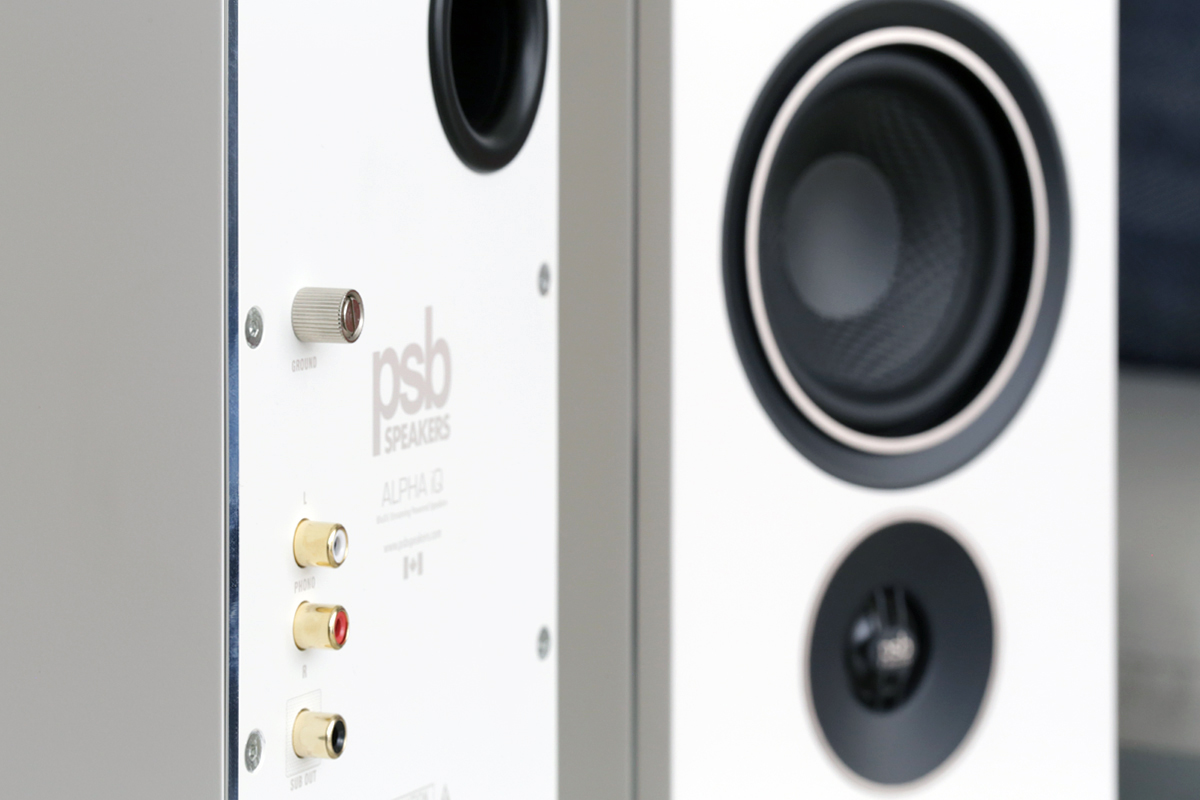
Another is connectivity. The Alpha iQ has an HDMI eARC port, which the AM3 does not. While the AM3 has a Micro-USB port that can be used for connecting a computer, the Alpha iQ has a USB Type-A port for connecting a drive loaded with music files. And unlike the AM3, the Alpha iQ has Wi-Fi and ethernet connectivity.
Which leads to one of the Alpha iQ’s signature features: a built-in network streamer based on the BluOS multiroom music platform developed by PSB’s parent company, Lenbrook International, which also owns NAD and Bluesound. Using the BluOS Controller app, which is available for Android, iOS, macOS, and Windows, listeners can cue up music from more than 20 streaming services, including several that deliver lossless and hi-rez audio. They can also play music stored on a portable drive connected to the primary speaker’s USB port. And they can share music with other BluOS-enabled components on the same network. The Alpha iQ also supports Apple AirPlay 2, Spotify Connect, and Tidal Connect; and it’s Roon Ready.
You can connect components such as a turntable, disc player, and HDTV, to the Alpha iQ; but you don’t have to. With its BluOS streamer, the Alpha iQ is a completely self-contained music system. Plug the speakers into power outlets, connect the system to your home network, and you’re ready to play some music.
Inside and out
The Alpha iQ is sold as a system consisting of a primary speaker, which contains all the input and output connectors, and a secondary speaker. Each enclosure measures 5.7″W × 9.7″H × 7.6″D. At launch, the system only comes in white or black satin finishes, but will also be available in blue, yellow, or orange.
The enclosures are constructed from MDF. A thin metallic strip is visible along the top, bottom, and sides of each enclosure. This is not a decorative element. It’s the edge of a solid substrate behind the front baffle, which is constructed from MDF over an aluminum plate. The rear baffle, which is screwed onto the enclosure, is made of aluminum.
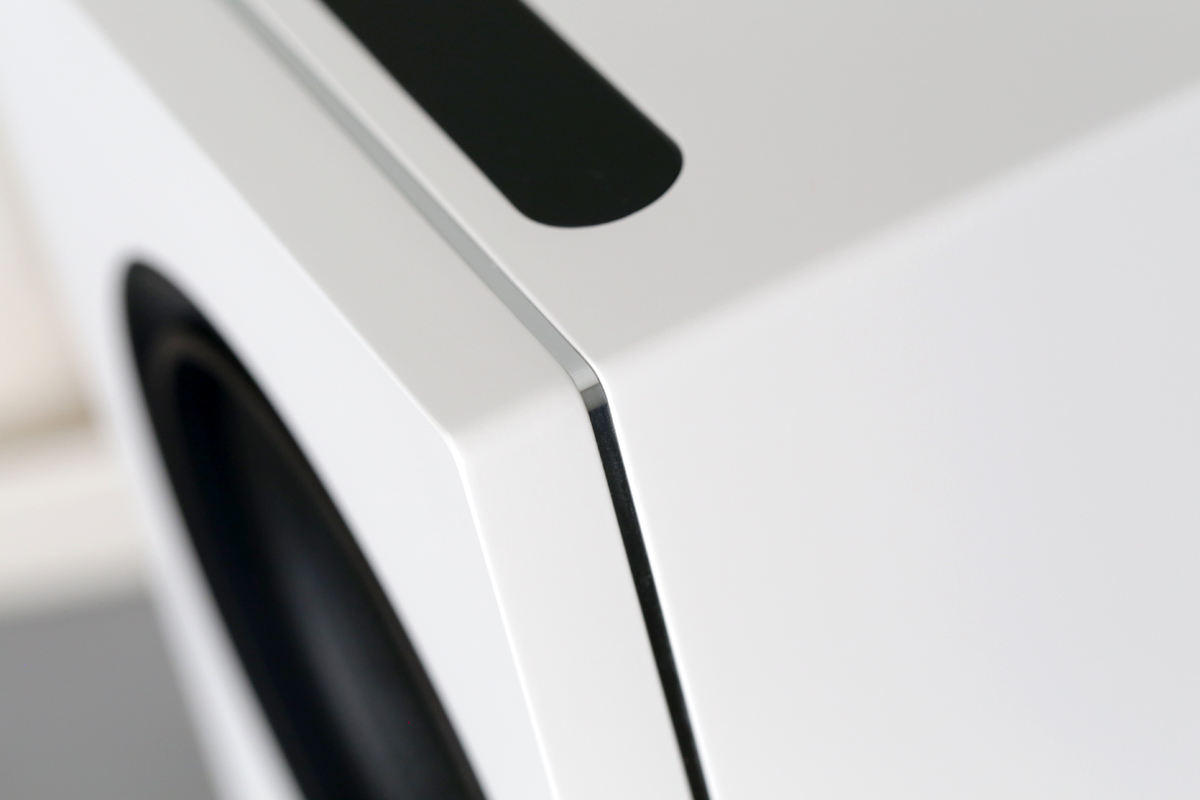
As is the case with many of PSB’s designs, the midrange-woofer is mounted above the tweeter. Combined with the 24dB/octave acoustic Linkwitz-Riley crossover, this arrangement ensures that the outputs of the drivers remain in phase in the crossover region whether the listener is seated or standing. In addition to implementing the active crossover, which is centered on 2kHz, the Alpha iQ’s DSP chips perform dynamic EQ and limiting. If you’re playing music with lots of low-frequency content at very high volume levels, the DSP will limit bass output to protect the midrange-woofer from damage.
During my listening, I was constantly surprised by how deep these little speakers could go. The Alpha AM3 employs a DSP algorithm called MaxxBass, which analyzes the signal’s bass content below 38Hz and creates a series of harmonics based on that content. MaxxBass applies a high-pass filter to the signal to remove bass below the cutoff frequency, then adds the harmonic series it calculated. This process exploits a known psychoacoustic phenomenon whereby listeners perceive missing fundamental bass frequencies based on the harmonics of those frequencies. In contrast, the Alpha iQ does not try to fool listeners into thinking they’re hearing deep bass; it delivers the real thing.
On the upper-right corner of the rear baffle of each speaker is a large bass port, which terminates a long reflex tube that snakes around the interior—to the front, then to the opposite side of the front baffle, and then to the bottom. This arrangement means the bass port has an unusually low resonant frequency for a speaker of this size: around 40Hz. Specified on-axis frequency response is 64Hz–20kHz, ±3dB, with a low-frequency cutoff (-10dB) of 35Hz. In most applications, the Alpha iQ speakers will likely be placed close to a wall, which will provide bass reinforcement.
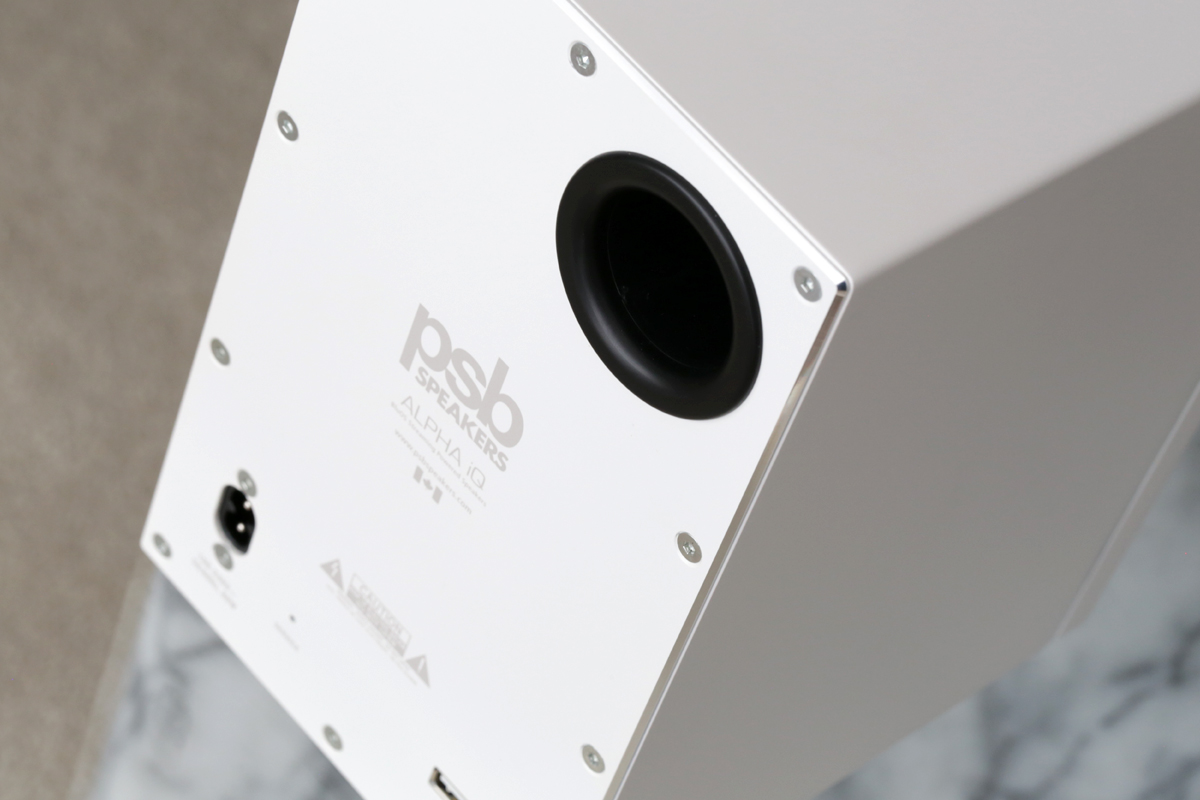
The only connectors on the back of the secondary speaker are a two-prong power inlet and a USB Type-A port for service. The primary speaker has MM phono inputs and a ground terminal for connecting a turntable, a 3.5mm stereo line-level analog input, an optical S/PDIF (TosLink) input, an HDMI eARC port, an ethernet port, a USB Type-A port for connecting an external drive, and a subwoofer output.
Analog audio from the phono and auxiliary inputs is converted to 16-bit/48kHz digital PCM. Maximum resolution via ethernet, Wi-Fi, USB, and TosLink is 24/192; DSD is not supported. Like all BluOS-enabled products, the Alpha iQ features full hardware decoding and rendering of MQA streams, which enables hi-rez streaming from Tidal.
The primary speaker communicates with the secondary speaker via Wi-Fi. While the Alpha iQ can receive audio from streaming services over your home network, it uses a private Wi-Fi network for inter-speaker communications. Audio is sent at native resolution; if the primary speaker is receiving a 24/192 stream, it will send 24/192 PCM to the secondary speaker.
If you’re connecting a subwoofer, you can set the crossover frequency in the BluOS app. This engages a low-pass filter for the sub and a high-pass filter for the Alpha iQ speakers, so they do not have to do any heavy lifting in the bass region. The Alpha iQ can also be paired wirelessly with Bluesound’s Pulse Sub+ subwoofer ($749).
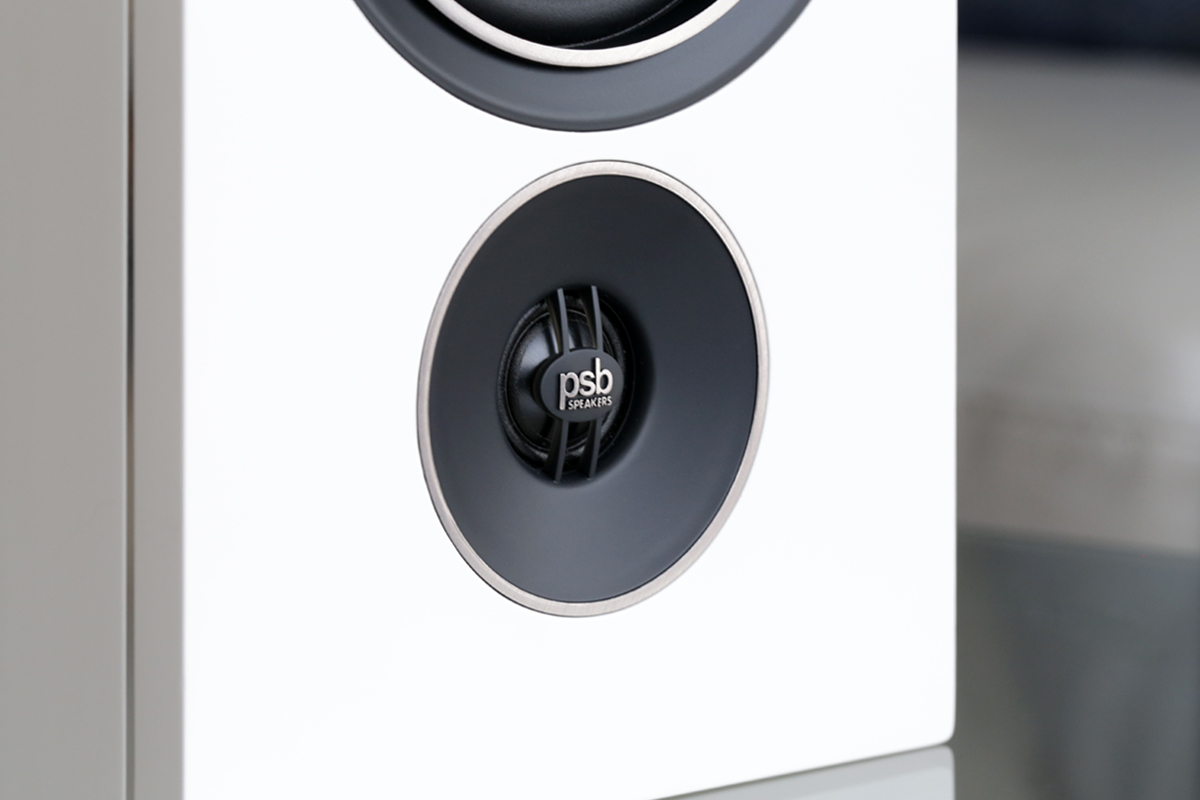
Near the bottom of the tweeter’s waveguide on each speaker is an LED that glows and flashes different colors to indicate network and system status. On the top of the primary speaker is a small strip containing illuminated volume and play/pause controls. I wish more powered and active speakers had this feature, which means you don’t have to reach for a remote or your phone every time you want to adjust volume or pause playback. But the Alpha iQ does not come with a remote, and there are no hardware controls for switching sources—you have to use the BluOS Controller app. But you can program a third-party remote, such as the Bluesound RC1 ($59), to perform this function.
Setup and software
The Alpha iQ comes with a rudimentary Quick Setup Guide, but there are several worthwhile resources on PSB’s website. These include two detailed setup guides, one for iOS users and another for Android users, and a full manual. Lenbrook also has a comprehensive support site for BluOS.
For setup and day-to-day operation, you have to use the BluOS Controller app. After I launched the app on my Google Pixel 4a smartphone, it found the Alpha iQ system then asked me to select my network from a drop-down list and enter my network password. After I had given the system a custom name (“Alpha iQ”), the app uploaded network information to the primary speaker, and then installed a software update, which took several minutes. These steps will be old hat to anyone who has installed a BluOS-enabled component in the past.
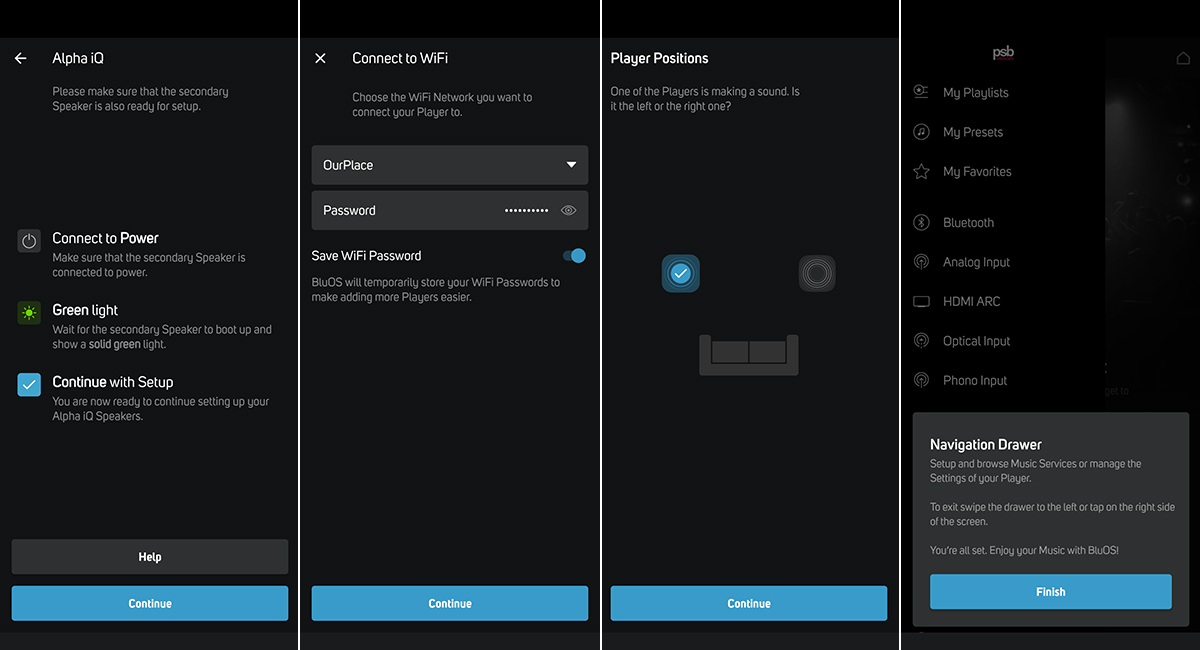
But the next step was new: having found the secondary speaker, the app played a sound through the primary and asked me to identify whether the sound was coming from the left or right speaker. This is a nice touch, because it lets you place the primary speaker near the source components that you want to use with the system. After I had completed these steps, the BluOS app installed a software update on the secondary speaker, then paired the primary and secondary speakers.
With setup complete, the app offered to provide a short tutorial on using BluOS. I’ve reviewed many BluOS-enabled components, and employed one (the NAD C 658 streaming DAC-preamp) in my reference system for several years. This is the first time I’ve seen that tutorial. For users who are new to BluOS, this is a very welcome feature. As I’ve written many times, BluOS is a robust platform, but it’s also very rich, so it’s nice that the app now includes a quick guide to its basic design and functions.
After initial setup was complete, I added details of my Qobuz subscription in the Music Services item in the app’s Navigation Drawer and selected the maximum resolution (24/192 FLAC). I used Qobuz for most of my listening. I also played lossless and hi-rez tracks from a Samsung SSD that I had connected to the primary speaker’s USB port, and streamed music to the Alpha iQ system via Roon and AirPlay.
The only (minor) wrinkle was that the BluOS app did not display art for a few of the albums on the USB drive. Other than that, everything worked solidly. I experienced no network hiccups or software glitches at all, or any problems with wireless communication between the primary and secondary speakers.
Listening
As I often do with small powered and active monitors, I started with desktop listening, with the two speakers on IsoAcoustics ISO-130 stands on the top shelf of the secretary desk in my home office. The speakers were 3′ apart and 3.5′ from my listening position as I leaned back in my office chair. Their rear panels were 4″ from the wall behind my desk. I connected my Pro-Ject Debut Carbon Evo turntable ($869 CAD with Ortofon 2M Red cartridge) to the primary speaker’s phono inputs.
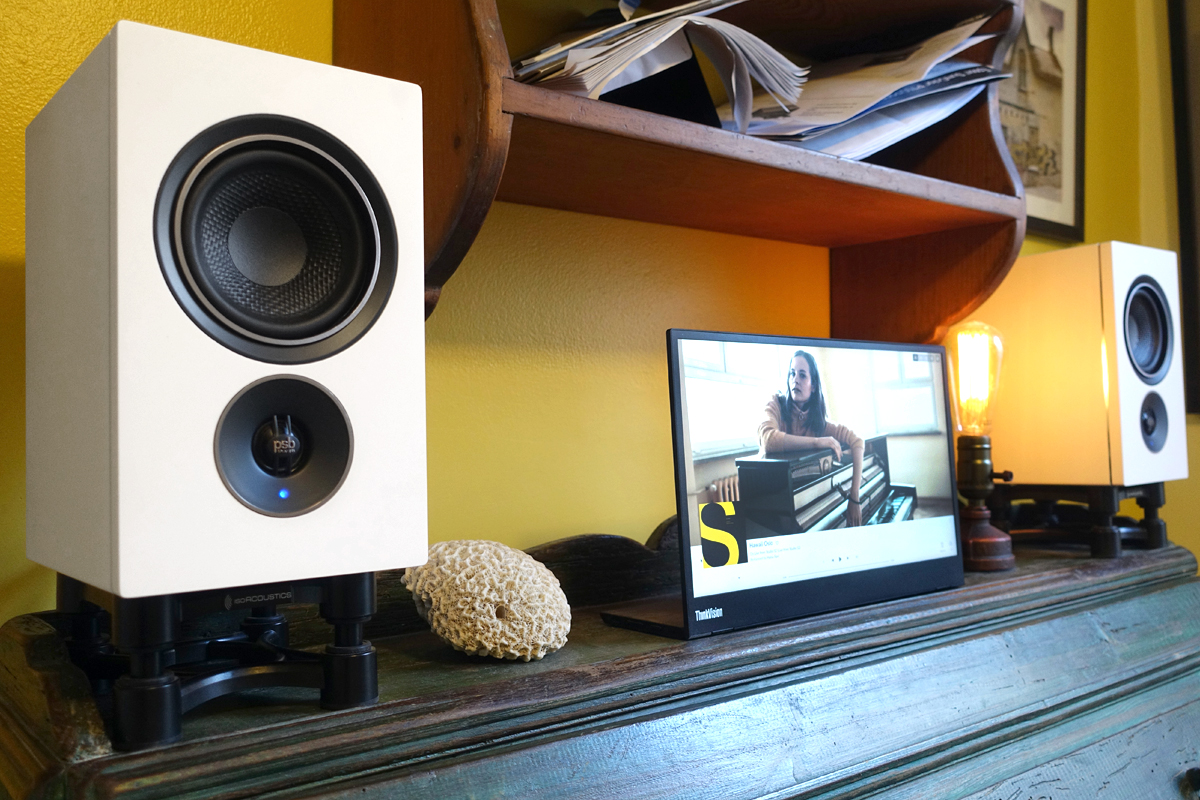
On all inputs, with no music playing and volume set at a moderately high level, I could hear a very mild hiss. But this noise was inaudible when music was playing. Interestingly, the hiss was no louder when the phono input was selected.
The first record I spun was Live from Studio S2 Warsaw (Gondwana Records GONDEP048) by the Polish keyboardist/singer/composer Hania Rani. (A million thanks to my colleague Dennis Burger for turning me on to this amazing artist.) On the four-song EP, Rani plays an upright piano, Steinway grand, Roland FP-7 stage piano, and Prophet ’08 synthesizer; she also sings on one of the tracks.
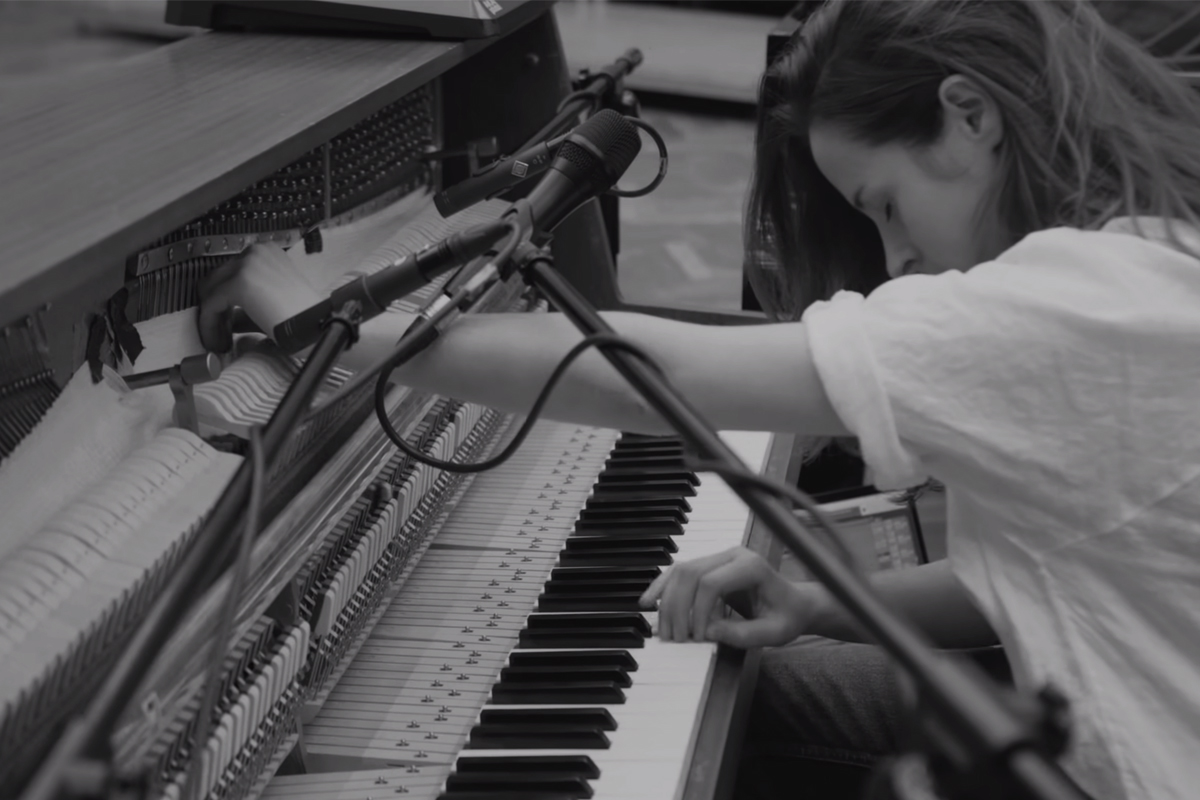
“Glass” is played on the upright, whose muted strings give it a warm, nostalgic tone. The instrument is very close-miked, so you can hear the internal mechanics acting like percussive accompaniment to Rani’s playing. Through the Alpha iQ system, Rani’s light, skipping notes in the upper octaves were wonderfully articulate, with the soft leading edges and shortened decay characteristic of a felt piano. Lower notes had beguiling warmth and solidity.
I chose this track because the muted upright is underpinned by deep notes from the Prophet synth in several sections, which I figured would be a good test of the Alpha iQ’s bass capabilities. The PSB system reproduced those notes without booming or droning, and with excellent pitch differentiation. While the system lost a little gas in the deepest notes, they still had impressive growl—unexpectedly so for speakers of this size.

Listening to a digital stream of “Glass” (24/96 FLAC, Gondwana Records / Qobuz), the deep synth notes sounded even more powerful, with more clearly defined leading edges and even more growl. The transients of the upright piano were a little crisper, without sacrificing the warm, nostalgic character of the instrument. I could hear the clacking of the piano’s innards more clearly, and the lower notes had more heft and authority. The digital version had greater clarity and impact, but the LP had a touch more warmth. Both versions sounded meltingly beautiful through the PSB system.
To hear how the Alpha iQ system would render acoustic instruments, I cued up Patricia Barber’s performance of Thelonius Monk’s “Straight No Chaser” from her marvelous 2021 standards album, Clique (24/176.4 FLAC, Impex Records / Qobuz), in the BluOS app on my Android phone.
The moment I heard the opening riff by double-bassist Patrick Mulcahy emerging from the right side of the soundstage, I thought: “Wow. Where’s that coming from?” The attacks of the strings against the fingerboard were fast and snappy, and the decay of the soundbox was rich and woodily resonant, with no bothersome boom or bloat. The sound was big and powerful, right down to the lowest notes.
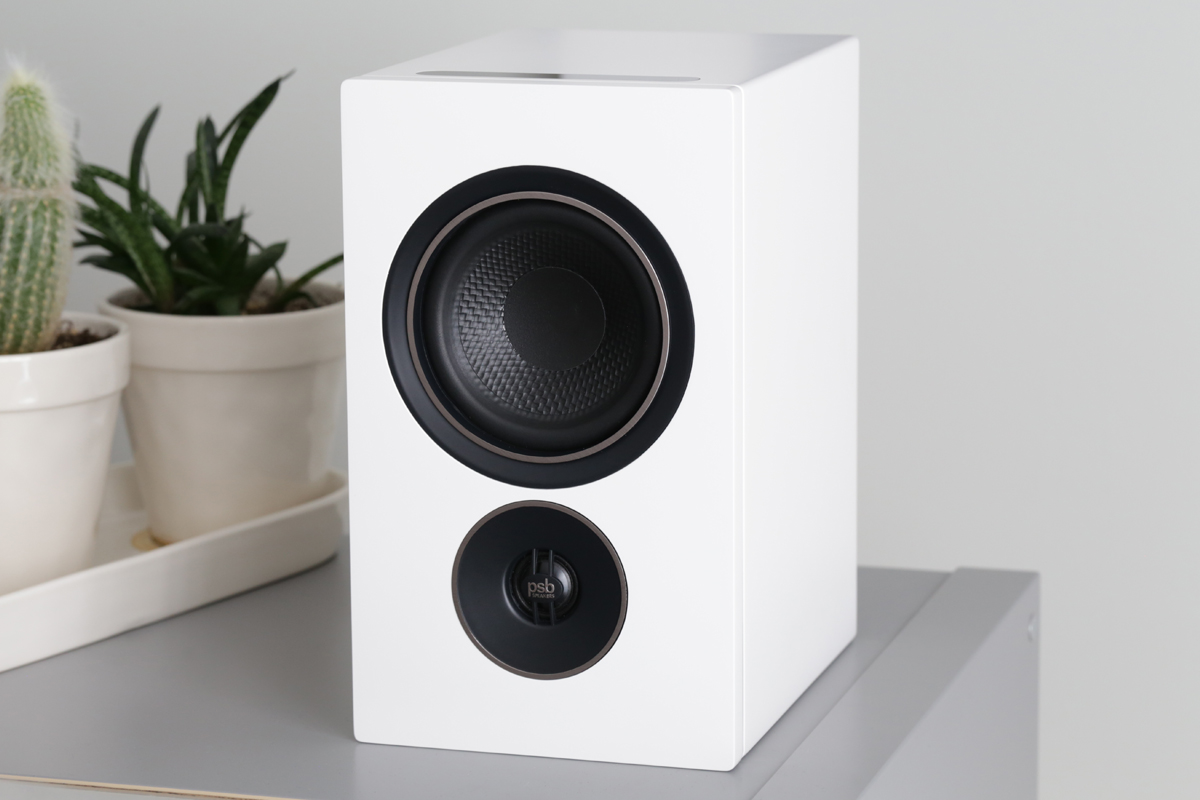
The PSB system nailed Barber’s playful, skipping piano style during the first half of the track, making it easy to admire her subtle legato touch and creative use of the sustain pedal. And it scaled up easily to deliver her loud chords and phrases in the middle of the track. The piano tone was natural and consistent throughout the instrument’s range.
Jon Deitemyer’s drum solo near the end of the track showed the surprising dynamic chops of these little speakers. Kick-drum beats were big and bold, and rim shots were sharp and impactful—hard-hitting but not harsh. When Deitemyer hit the floor tom, I could clearly make out the impact of the mallet on the drum head, followed by the resonance of the tom’s body.
The soundstage extended well behind the speaker plane, with Barber’s piano in the front left, Mulcahy’s double bass in the front right, and Deitemyer’s drum kit arrayed across the rear. Aural images were clearly defined and three-dimensional, with excellent front-to-back layering. With my eyes open, I was of course aware that I was listening in the nearfield. But if I closed my eyes, the experience was as riveting as it would’ve been with a full-size system in a large room. The only clue that I was listening to a very small set of speakers was some mild dynamic compression: for example, in that furious drum solo.
On the next track, a gorgeously tender cover of Stevie Wonder’s “All in Love Is Fair,” the PSB system reproduced Barber’s gentle, legato piano accompaniment beautifully. And everything I had admired before about the rendition of the double bass and drums applied to this track. Occasionally, I noticed a very mild, hollow coloration in the lower part of Barber’s vocal range, and a slight shouty quality when she was singing louder, higher notes. I’ve heard that shoutiness on other systems as well; it’s in the recording, and the Alpha iQ did not hide it.
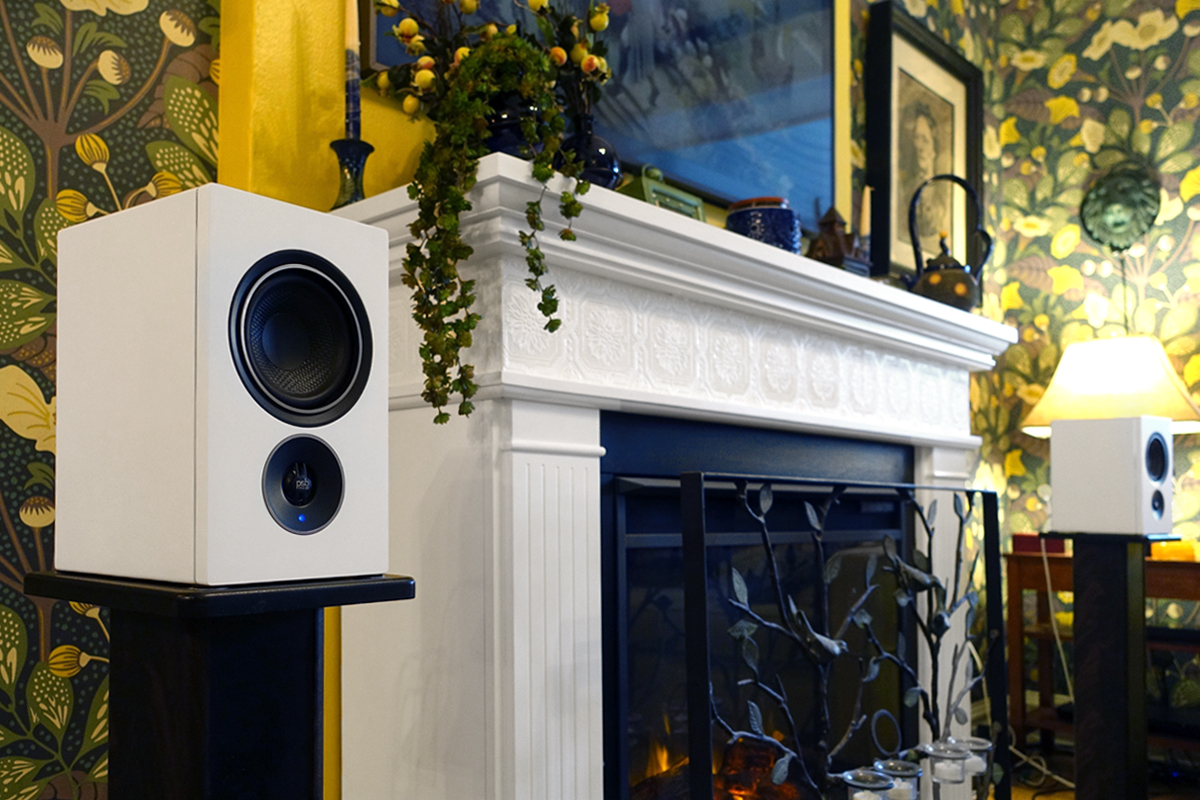
Clearly, this little system works wonderfully for nearfield listening. To find how it would fare in a larger space, I took the speakers downstairs to the living room and set them on 28″ sand-filled speaker stands on either side of the electric fireplace. The speakers were 18″ from the wall behind them, 7′ apart, and 7′ from my listening position on the end cushion of the sectional sofa against the opposite wall.
Up to this point, I’d been playing a lot of artsy-fartsy stuff. But could these little speakers party? They could indeed, as I confirmed by playing the title track from Exodus by Bob Marley and the Wailers (24/96 FLAC, Island Records / Qobuz). Situated just to the left of center of the soundstage, Aston “Family Man” Barrett’s Fender Jazz bass pounded. While the leading edge of Barrett’s notes weren’t as sharp as I’ve heard from other speakers, the bass was loud, deep, and robust, with no evidence of compression or muddiness. Marley’s voice sounded completely natural, and so did the voices of his backup singers, both male and female. The horn section behind the singers had impressive bite and impact, as did the two electric guitars: one on the right slashing a hard reggae beat, the other on the left playing wah-wah accents. Even at party levels, the Alpha iQ system did not sound hard or distressed. I could not believe the sound was coming just from these two small speakers.
To hear how the PSB system would cope with a demanding movie soundtrack, I placed the speakers and IsoAcoustics stands on the mantle of the electric fireplace in our basement family room, underneath a wall-mounted Samsung 50″ Frame TV, and connected the primary speaker’s HDMI eARC port to the TV’s One Connect breakout box. The speakers were 4′ apart and 6′ from my listening position on a small sofa against the opposite wall; their back panels were 6″ from the wall behind them.

What should I play? A big sci-fi flick full of special effects and fly-bys? A spy thriller with gunfights and explosions? Nah. Too easy. To test the Alpha iQ system’s dynamic capabilities, I rented Tár from the iTunes store, and skipped an hour into the movie to the scene where lead character Lydia Tár (Cate Blanchett) is conducting the Berlin Philharmonic in a rehearsal of Gustav Mahler’s Symphony No. 5.
At the beginning of the rehearsal scene, when the BPO plays the huge crescendo that follows the opening trumpet fanfare of the Trauermarsch (Funeral March), I experienced another wow moment. The low-pitched trombones and tuba sounded bold and brassy, but also deep and threatening. The timpani and rolling bass drum were suitably ominous, and the cellos and double basses had delicious growl and texture. When the whole orchestra was playing fortissimo, the sound became a bit congested (how could it not?), but never harsh or strident. Through the whole scene, the speakers disappeared—I was only aware of the orchestra, arrayed on a soundstage that extended well behind the speaker plane.
The sound of Blanchett giving instructions to the orchestra in German and English was completely natural, with her voice reverberating convincingly through the Philharmonie concert hall. This is something I noticed throughout the movie. Dialog from both male and female characters sounded natural, and well-matched to the varied locations: the auditorium where the Blanchett character is interviewed by the New Yorker’s Adam Gopnik, the Juilliard lecture hall where she conducts a master class, her Berlin apartment, restaurants in New York and Berlin, and the Philharmonie itself.
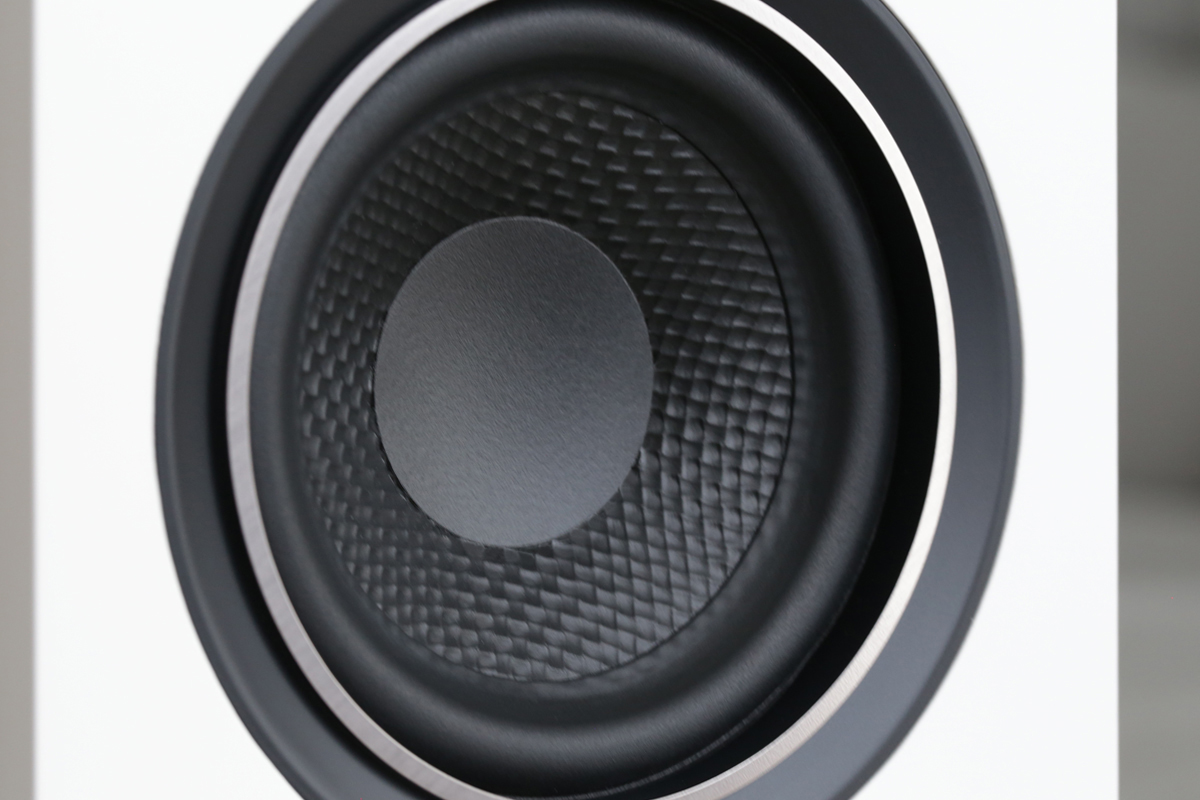
Foley effects—a limo revving its engine, traffic noises on a Manila street—were likewise convincing. Of course, the rehearsal scene and Foley effects would have been more compelling through larger speakers and more powerful amplifiers. But watching the entire movie with the sound coming from the little PSB system, I never found myself wishing for more. I remained immersed in the movie.
Comparisons
Upstairs in my home office, I compared the Alpha iQ with Q Acoustics’ Q Active 200 active loudspeaker system ($2098). Each speaker employs two 2.25″ balanced-mode radiator drivers, each powered by a class-D amplifier rated at 20W continuous, and a rear-firing 4.5″ bass driver powered by a class-D amp rated at 55W continuous. Something worth noting: I sometimes get dropouts with the Q Active 200 in my office. That never happened with the Alpha iQ system.
Playing Barber’s rendition of “Straight No Chaser” through the Qs with their room boundary switches in the near-wall position, Mulcahy’s double bass had a little more snap but less woody resonance. Barber’s piano had more sparkle up top through the Qs, but more heft down low through the smaller PSBs. On Deitemyer’s drum solo, transients were crisper through the Q Active system, but floor-tom and kick-drum beats had a little less impact than they did through the smaller PSB setup. Aural images were more precise through the Qs, but the soundstage was more filled-in through the PSBs. Listening to the Qs with my eyes closed, I did not escape the nearfield experience the same way I did with the PSBs. On this track, the smaller PSB system delivered a greater sense of scale.
On “All in Love Is Fair,” the hollowness in Barber’s voice that I heard on the PSBs was a little more pronounced through the Qs. Not only that, sibilants were a bit hotter. Dynamics were more natural on the PSBs—when Barber suddenly ramped up the volume, the Qs sounded a bit harder than the PSBs.
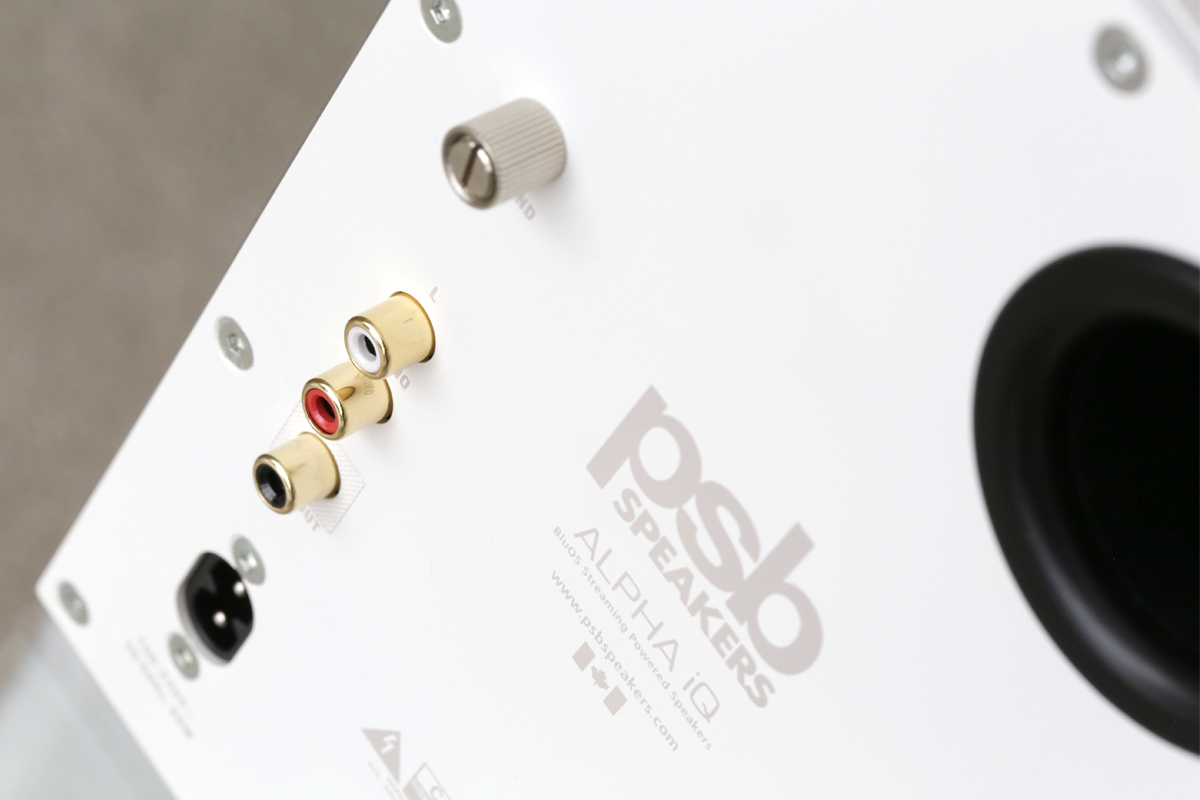
In my living room, I compared the Alpha iQ with SVS’s Prime Wireless Pro active speaker system ($899.99). Like the Alpha iQ, the Prime Wireless Pro is a two-way, rear-ported design, but with a larger woofer and enclosure. The SVS system has a 5.25″ polypropylene midrange-woofer and a 1″ aluminum-dome tweeter in each speaker, each with its own 50W class-D amp. The SVS’s enclosures are 73% larger than the PSB’s.
On “Exodus” by Bob Marley and the Wailers, the transients of Barrett’s Fender bass were a tad sharper through the SVS speakers, but the instrument sounded bigger and more powerful through the PSBs. Drums and percussion hit harder through the smaller PSB system. The spatial presentation was flatter through the SVS system; the soundstage was deeper through the PSBs, and also more filled-in. The sonic differences were consistent with the difference in price, but not with the relative sizes of the enclosures. I didn’t expect the Alpha iQ to be more of a party animal than the larger SVS setup, but it was.
In my basement family room, I played the rehearsal scene from Tár through a Bowers & Wilkins Panorama 3 Dolby Atmos soundbar ($999). The soundstage extended much farther to the sides with the B&W soundbar; not surprising, as I was hearing the Atmos mix rather than a two-channel PCM downmix of the soundtrack. Otherwise, it was advantage Alpha. The sound of the orchestra was hollower and more homogenous through the B&W, and more transparent through the PSB system. The B&W bar sounded more dynamically compressed—instruments weren’t as well differentiated. The brass had less bite, and the cellos and double basses had less growl and texture. And that ominous bass drum was practically missing in action. Dialog was as intelligible through the B&W bar as it was through the PSB speakers, but voices were less embodied, and Foley effects were more compressed.
Conclusion
As should be apparent by now, PSB’s diminutive Alpha iQ streaming active loudspeaker system delivers sound that’s far weightier than your eyes would lead you to expect. The sound isn’t just big; it’s also refined. Throughout my listening, I was impressed by the Alpha iQ’s timbral neutrality, soundstaging, and portrayal of fine detail.
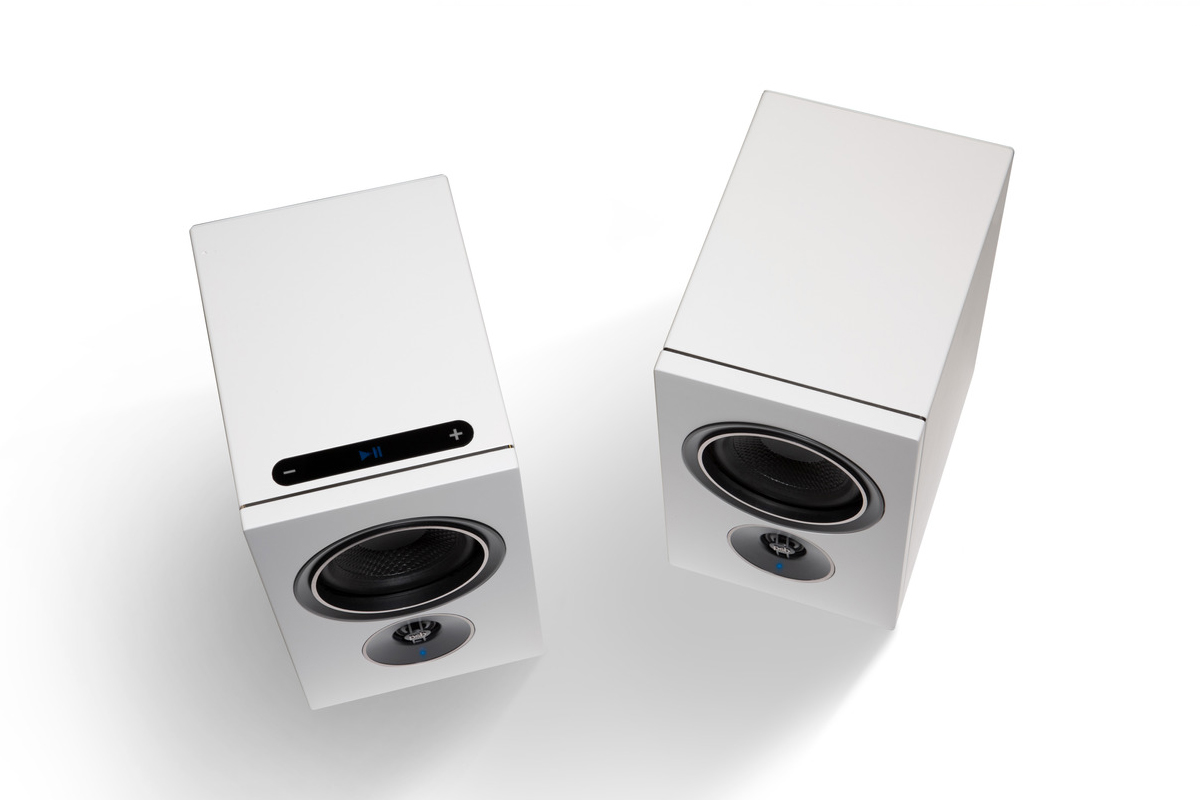
All the rooms in our 1920s Toronto rowhouse are smaller than average—not just my home office and basement family room, but the main-floor living room as well. The Alpha iQ system performed wonderfully in all these spaces. For significantly larger rooms, many listeners will want a system capable of higher output and deeper bass extension. On the other hand, if you mate the Alpha iQ system with a suitable subwoofer, who knows?
But for smaller spaces, it’s hard to imagine a system that performs better than the Alpha iQ at anything near its $1500 price tag. Combine its excellent sonics with the abundant connectivity options and the excellent BluOS streamer, and you’ve got a winner. Highly recommended.
. . . Gordon Brockhouse
Associated Equipment
- Active loudspeakers: Q Acoustics Q Active 200, SVS Prime Wireless Pro.
- Soundbar: Bowers & Wilkins Panorama 3.
- Desktop speaker stands: IsoAcoustics ISO-130.
- Turntable: Pro-Ject Debut Carbon Evo with Ortofon 2M Red cartridge.
- Display: Samsung QN50LS003 50″ UHD TV “The Frame.”
- Music server: Apple Mac Mini (2021, M1) running Roon Core 2.0.
- Control devices: Google Pixel 4a 5G and Apple iPhone 8 smartphones.
- Network: Google Wifi four-node mesh network.
PSB Alpha iQ Streaming Active Loudspeaker System
Price: $1499.
Warranty: One year, parts and labor.
PSB Speakers
633 Granite Court
Pickering, Ontario L1W 3K1
Canada
Phone: (905) 831-6555
Fax: (905) 831-6936
Website: www.psbspeakers.com



